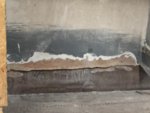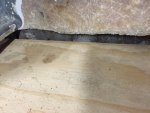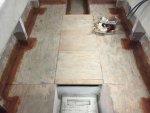Hello hello! I'm relatively new to the forums so if I am missing anything obvious please feel free call me out or point me in the right direction.
I'm restoring a 1972 Thunderbird with the cathedral tri-hull.
Strings have all been replaced and glassed in and I'm just about ready to put in new floor.
Now the question. There is the hull and then there is a inner fiberglass skin that is not mated to the hull. When I cut out the floor it was only glassed to this skin and now the skin layer is "floppy" without the flooring. I've seen a lot of different stuff on the inter webs. My question is when bedding down the new floor would it be better to bed into the hull or just tab the skin?
(Pic soon)
My plan (absent of any insight gained here) is to run the floor all the way to the hull and bed it with thickened resin and then run over it with regular resin. After that, since the skin lays flat on the hull at the bottom, to tab the skin into the floor. Basically this means not tabbing the hull to the sole. Let me know what you guys think.
I'm restoring a 1972 Thunderbird with the cathedral tri-hull.
Strings have all been replaced and glassed in and I'm just about ready to put in new floor.
Now the question. There is the hull and then there is a inner fiberglass skin that is not mated to the hull. When I cut out the floor it was only glassed to this skin and now the skin layer is "floppy" without the flooring. I've seen a lot of different stuff on the inter webs. My question is when bedding down the new floor would it be better to bed into the hull or just tab the skin?
(Pic soon)
My plan (absent of any insight gained here) is to run the floor all the way to the hull and bed it with thickened resin and then run over it with regular resin. After that, since the skin lays flat on the hull at the bottom, to tab the skin into the floor. Basically this means not tabbing the hull to the sole. Let me know what you guys think.























